Three new kick-ass customs
No-nonsense bikes for ‘Lunchbucket Joe’
Scottsdale, Ariz., Nov. 6—The tight-knit group of friendly fellows at the new Sucker Punch Sallys production digs in this Southwest desert town had plenty to tell the moto-media types on hand for its first-ever model rollout. There was lots of talk about a fast-growing covey of SPS dealers and details about adding more production space and equipment like a CNC machine. But at the top of the list was the announcement that in 2008 this fledging bike-manufacturing outfit would double its available model line.
True, that jump meant going from only three models to a modest six, but that’s still a quantum leap for a company that started a scant five years ago and turned out a handful of bikes in the back of a tiny Midwestern speed shop. However, the number of bikes sold is hardly the whole story. SPS has knowingly tapped into the growing number of younger bike riders—the skater-dude-meets-hotrodder camp—that reveres minimalist bikes that hark back to the kickstart, hardtail, bobbed, cut down and chopped bike styles of yesteryear, but with modern technology like dependable power plants and good brakes. (Not that some graybeards aren’t drawn into the mix as well.)
So, perhaps the most illuminating announcement here was the disclosure that 2008 SPS has a new model with—gasp—a swingarm (with no kicker). Fittingly, the Sucker Punchers are calling it the Swinger, but test rides at the rollout showed it could well be called the All-day Sucker; that is, it’s a bike one could ride easily from sunrise to sundown (but more about that later).
Rolling the new bikes out for a review of their individual features, SPS General Manager Christian Clayton hastened to add that the other two Sucker Punch models that are new for 2008—the Hot Rod and the Slim—sport the traditional SPS old-school-style rigid frames. So, with two solid left jabs and a surprise right, it was apparent that SPS is hoping to deliver a knockout combination for 2008. Backing the play of the new entries is a trio of existing SPS hardtail models: the Sled (with 4.2-gallon tank for longer trips), Traditional Bobber (the original SPS bike tips its 2.25-gallon gas tank to the bobbers of yore), and 66 Bobber (with a flat-tracker stance and four-piston brakes, it’s reportedly the most popular SPS bike to date).
Clayton said, in keeping with the company’s goal of providing “the regular working guy” with an affordable production-custom bike, 2008 SPS stickers will range from $19,995 for the Trad Bob to $27,995 for the high-performance Hot Rod. All SPS bikes have a one-year warranty. At much lower prices, SPS also has a number of bike-in-a-box kits and rollers available. The company also markets a line of clothing and peddles individual bike parts.
Start ’er up
Sucker Punch Sallys bike works is the brainchild of Donny Loos and Jeff Cochran, two friends from Miamitown, Ohio, a small rural burg a few miles northwest of Cincinnati. Both love hot rods and no-frills bikes. In 2002 they pooled their collective passion and talent for bike building and launched SPS in a very modest-sized workshop in Ohio. Custom builds followed, as did some Sucker Punch home-build kits and custom parts.
The word on the street, helped along by some favorable reviews in national moto-media, was good. A small but select group of SPS dealers was assembled and more orders rolled in; frankly, it was more traffic than the tiny Ohio shop could handle comfortably. So, in October of 2006, armed with the appropriate certification as an official bike-manufacturing outfit, Sucker Punch Sallys moved halfway across the country to its current 16,000-square-foot production facility in Scottsdale. (In the words of Christian Clayton, the Ohio SPS facility is “a three-car garage” that remains open for new-bike research and development and one-off custom builds.)
While hardly a no-brainer (particularly given the present industry-wide “cooling off” of the motorcycle market), Sucker Punch Sallys’ move to the central Arizona area did make sense. The region is home to many other bike-building concerns as well as a nationally recognized bike-mechanic training school and, therefore, has a large existing labor pool from which to draw. Leaving Midwestern winters behind was a plus too. The plan was to build a wider dealer network and expand the SPS products to new markets. So far, it seems, so good.
Between 2008-model test rides, Clayton sat down with Thunder Press for an exclusive talk about Sucker Punch Sallys’ present status and future plans. Today, he said, SPS bikes can be found at 15 dealers, with plans to expand the dealer network over the next couple of years to a maximum of 50 shops. (Complex California emissions regulations, Christian says, currently keep the company’s bikes out of the Golden State but SPS is studying the CARB rules with an eye toward certification no sooner than the end of 2008.)
Before coming south, he said, SPS churned out 30 to 45 bikes per year. With the current 15-member Scottsdale crew, Sucker Punch now turns out that same number of bikes each month. Projections put total production at 300 SPS bikes for 2007. However, the current facilities, Clayton maintained, could pop out 60 bikes per month. Concurrently, SPS is opening a second production facility nearby to house a just-acquired CNC machine and to bring in-house other processes like powder coating and plating. He says this will both improve quality control and considerably shorten time-to-delivery of SPS products.
Ride ’em cowboys
But moto-media scribblers don’t travel from every part of the country just to listen to a bike builder’s yatta, yatta. Oral information and spec sheets are all well and good but the proof of the pudding is in the tasting; or, in this case, the test riding. With that in mind, SPS turned out its stable of bikes, both old and new models, for the gathered throng to run around the block.
In this case, that meant selecting an SPS steed and shaking off the stop-and-go traffic of suburban Scottsdale before romping through the cactus in the high-desert countryside. Although there was lots of swapping of bikes along the way, not every writer got to ride every model, but Thunder Press made sure right out of the chute to grab one of the new SPS Swinger bikes for the initial leg of the test ride (and to later ride another version of the swingarm-equipped model as well).
Smooth and comfortable, buyers are welcome (even encouraged) to accessorize the Swinger with a windshield, bags, and—very possibly—a passenger who can last more than a few miles. That’s a good thing because the 4.2-gallon tank, six-speed tranny, and external shocks make long-distance trips a very real possibility. That may seem counterintuitive for a company that has heretofore focused on the “We don’t need no stinking suspension” crowd, but Christian says, “not really.” In fact, he reports, the company is simply responding to what SPS fans have repeatedly said they want.
“When you’ve told 600 people ‘No, we’re not building a suspension bike,’ you begin to get the idea that maybe you’re missing a big segment of the bike-buying public,” Clayton says. A swingarm bike—similar to the old FLH Christian himself rides—seemed the most logical answer.
But fans of the traditional rigid frame—especially those who really like to tear it up—won’t be disappointed by SPS in 2008. Two other entries for the new year are real barn burners. Taking its styling cues from yesterday’s chopped Shovelheads, the new SPS Hot Rod looks just plain mean and nasty and backs up its mechanized scowl with a 93-inch S&S power plant.
The other new snarling SPS offering has the somewhat benign moniker of Slim. Don’t be fooled; they very justifiably could have dubbed it “Satan” (if that name weren’t already taken). The 100-inch RevTech engine, narrow tires (hence the name), and light frame combine for a rip-your-face-off ride that one is not soon to forget (more than one test rider suggested with a totally straight face that this baby needs a pair of rearsets if one expects to stay mounted.) Both of the new SPS rigids share some other features such as 2.25-gallon gas tanks and four-piston brakes front and rear. However, the Hotrod has a five-speed transmission (with a kicker) and the Slim a six-speed.
Since this was the first-ever SPS rollout, it was also the first opportunity for many (including the Thunder Press crew) to ride the company’s existing three models as well. One among the trio really stood out. Sucker Punch Sallys Traditional Bobber—the bike that started it all for SPS—is surprisingly smooth for a bike with only a sprung seat to ease the road bumps. Naturally the small tank limits the bike’s range between gas stops (we ran dry on the way back from the test ride), but the Trad Bobber was nimble and a joy to ride. It seems SPS got it right the first time.
And what about the future for this Midwest transplant? Well, teased Christian Clayton, maybe, just maybe there may be an SPS-badged Panhead and Shovelhead engine in the company’s future. He said that the power plants were being made available by an as-yet unnamed major manufacturer and had to first undergo testing by the Sucker Punch crew “to see if they (the engines) are up to our standards.” Should they pass SPS muster, fans of old-school bikes with modern dependable components will have something more to cheer about.

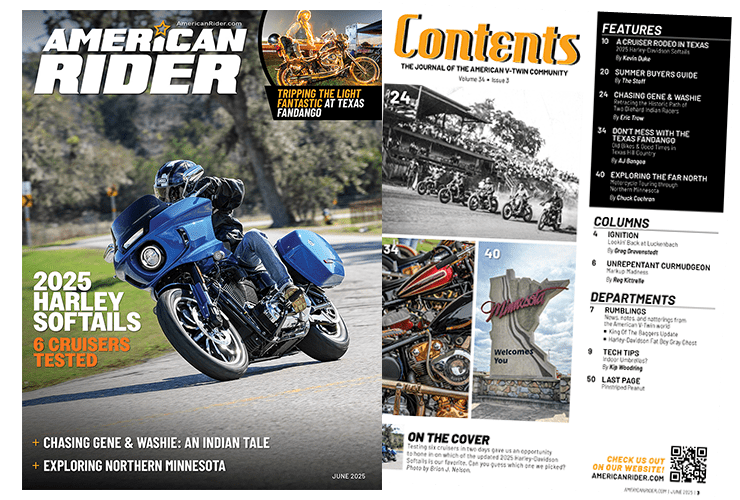
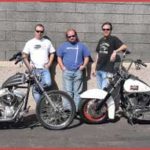


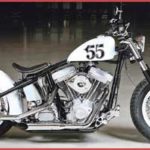


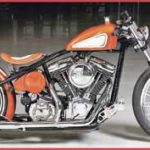

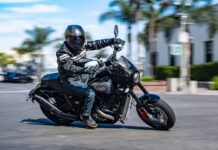
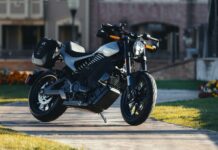
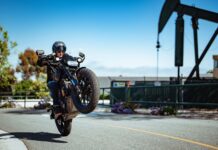













I have a 2008 Sucker Punch Sally’s 66 bobber. it is one of the best bikes I have ever owned. The bike rides well and looks great. it is a show winner and I love it.